Get Your Booty to the Poll (GYBTTP) was a 2020 campaign that used pole dance…
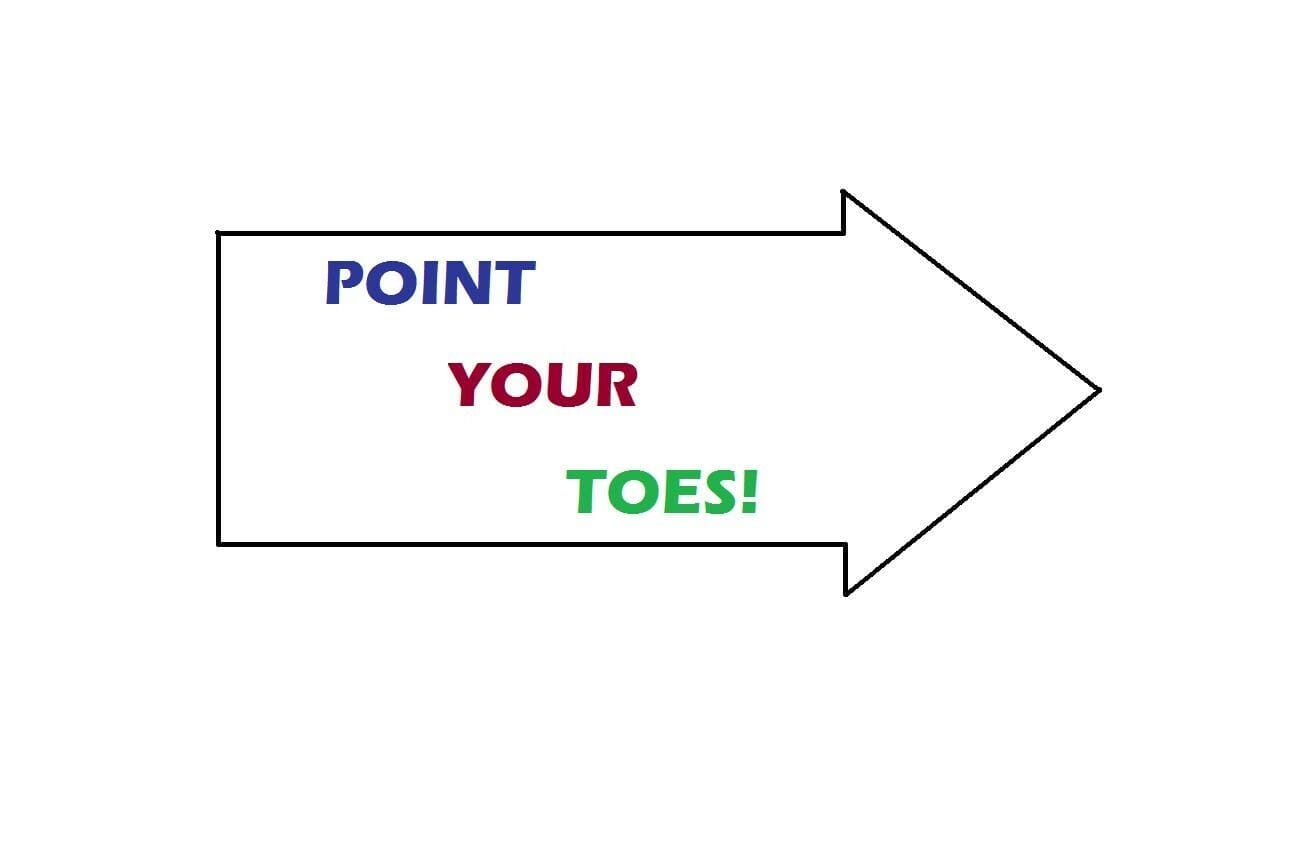
Point Your Toes 101
If you are a student, you’ve heard it. If you’re a teacher, you’ve said it. But, just what does it mean to ‘point your toes’?
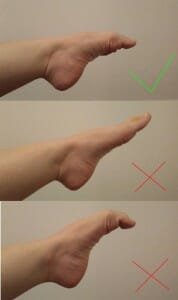
The phrase is misleading because it’s so much more than just your toes at work. All the muscles surrounding the bones in your feet (the tarsals and metatarsals) are in play either stretching or contracting. The difference between good posture and bad posture is in the muscles. To engage a muscle means to make it work, to tighten it rather than let it remain slack. To get a properly pointed foot, all the muscles must be fully engaged.
Look at the pictures in Figure 1. The top photo shows a strongly pointed foot: the top of the foot is stretched, the arch of the foot is contracted, and the toes are curled down. The middle photo shows an un-engaged foot — notice how the arch is not contracted and the toes are floating upward. The bottom photo shows an improperly pointed foot: while the arch is engaged and the toes curled downward, the top of the foot is not lengthened.
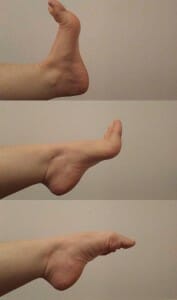
How do you achieve a proper point? Let’s look at Figure 2. Start with the foot flexed, pulling the toes back toward your leg. Keeping the toes pulled back, push the ball of the foot away from you, stretching the top of the foot. Lastly, extend the toes out and down, contracting the arch of the foot. This is the pointed position.
By reversing and repeating this process (curl the toes backward, flex the foot, push the ball of the foot away, point the toes, curl the toes, flex the foot, etc.), it becomes a dynamic stretching exercise and a resistance band wrapped against the sole of the foot can be used for greater intensity. This exercise teaches us to thoroughly articulate the muscles in the foot which strengthens the muscles and enables a better pointed position.
As with any little-used group of muscles, exercises may be uncomfortable in the beginning. There’s a fine line between feeling a useful stretch and feeling the pain that means you’re about to injure something, so go slowly and carefully. Tennis balls or foam rollers can be very helpful to ease any foot cramping that may occur.
Flexibility is a ‘use it or lose it’ quality, and most people are unaware of how flexible (or inflexible) their feet are. Adding foot exercises into your normal stretching routine will help you gain and maintain a strong pointed position.
So why all the fuss about feet? One reason is aesthetics; a fully engaged foot, either pointed or flexed, is more interesting to look at than a limp one. Additionally, a pointed foot extends the line of the body creating the illusion of a longer leg.
Not only does a beautifully pointed foot contribute to the aesthetics of your dancing, it will also support your technique. When your feet are fully engaged, it further engages the muscles in your legs, providing greater stability and control. This is especially important when performing maneuvers (such as leg hangs) that require all the muscles of the lower body to be fully engaged. A pointed foot can be the difference between success and failure.
Dance hard and point your toes!
Latest posts by April Rayne (see all)
- Choreographic Devices - July 21, 2017
- Choreography 101: Improv - July 7, 2017
- Quiz Time!: What’s Your Pole Style? - April 21, 2017
This Post Has One Comment
Comments are closed.
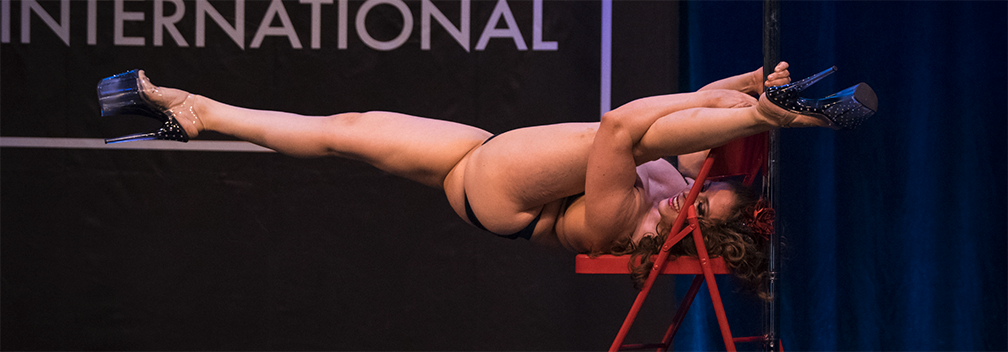
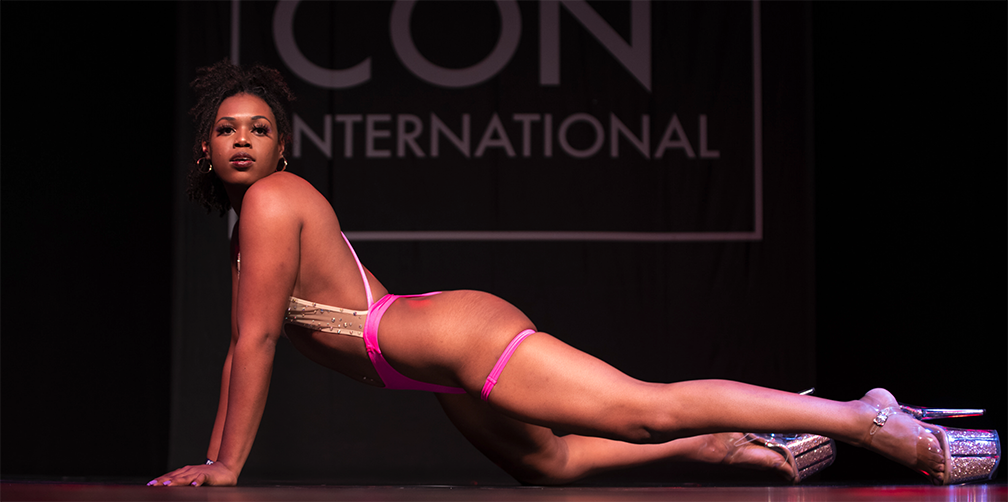
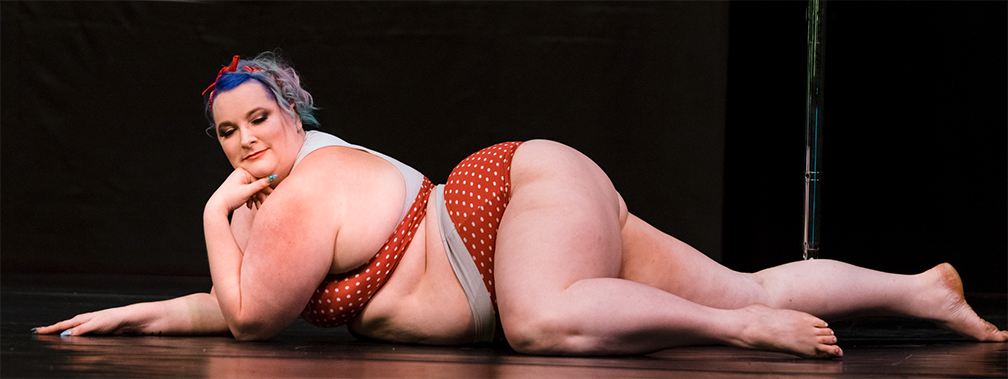
I couldn’t agree more with this, i teach pole dancing and I tell my girls all the time and its finally starting to sink in. I think when I share this article to my FB group with them I think it will drive it home